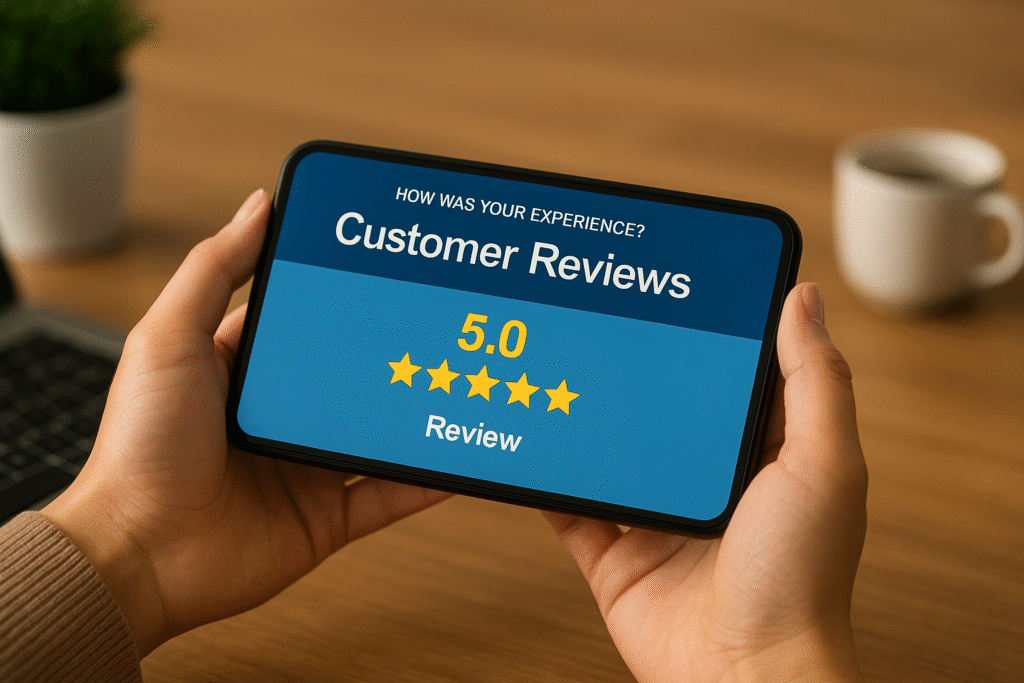
In today’s digital era, making informed purchasing decisions is more important than ever. With the rise of e-commerce and countless online marketplaces, finding reliable product information is both easier and more complicated. Easier because the internet offers a wealth of resources. More complicated because not all sources are trustworthy.
1. Official Manufacturer Websites: The First Stop for Accuracy
The most authentic and up-to-date information about a product typically comes from the official website of the brand or manufacturer. These websites offer:
-
Detailed product specifications
-
Official images and videos
-
Usage manuals and warranty details
-
Certifications and approvals
For instance, if you’re researching a laptop, the manufacturer’s site will offer the most precise data about its processor, battery life, display type, and software compatibility.
Tip: Always cross-reference data from third-party sources with the manufacturer’s site to ensure consistency.
2. Expert Reviews from Tech and Industry Blogs
Professional reviewers on established websites like CNET, TechRadar, The Verge, or Wirecutter are known for their objective, in-depth analysis. They typically conduct:
-
Performance testing
-
Durability assessments
-
Value-for-money comparisons
-
Pros and cons breakdowns
These reviews often include comparisons with competing products, real-world usage scenarios, and verdicts from experts who have tested dozens of similar items.
Bonus: Many experts offer video reviews on platforms like YouTube, giving a closer look at the product in action.
3. Consumer Reviews on Trusted E-commerce Platforms
Platforms such as Amazon, Flipkart, Best Buy, and Walmart feature thousands of user-generated reviews, making them gold mines for real-life insights. Key benefits include:
-
First-hand experiences
-
Ratings based on usability, quality, and delivery
-
Photos and videos from buyers
-
Long-term usage updates
Look for reviews marked as “Verified Purchase” to ensure authenticity. Sort by “Most Helpful” to read the reviews that buyers found most insightful.
4. Forums and Community Discussions
Platforms like Reddit, Quora, and dedicated forums such as AVSForum, XDA Developers, or Tom’s Hardware offer discussions from knowledgeable users. These communities provide:
-
Unbiased feedback
-
Workarounds for common product issues
-
Comparisons based on real-world testing
-
Use-case specific recommendations
For example, Reddit’s r/buyitforlife or r/ProductReviews are excellent for long-term product feedback and niche advice.
5. Product Comparison Websites
Sites like CompareRaja, Smartprix, Versus.com, or Pricebaba specialize in providing side-by-side comparisons between products in the same category. Features often include:
-
Price comparisons across platforms
-
Specification charts
-
User ratings
-
Expert verdicts
These tools are invaluable when you’re choosing between similar models and need a clear breakdown of strengths and weaknesses.
6. YouTube Product Reviews and Unboxings
YouTube has become a top destination for visual and detailed product reviews. Reputed creators like MKBHD, Linus Tech Tips, and Unbox Therapy offer:
-
Hands-on unboxing
-
In-depth performance tests
-
Unbiased product opinions
-
Tips and alternatives
What makes YouTube unique is that you get to see the product in action, which is particularly helpful for electronics, gadgets, fashion, and home appliances.
7. Influencer Reviews on Instagram, TikTok & Blogs
Micro and macro influencers often share honest feedback about products they’ve personally used. When sourced responsibly, these reviews offer:
-
Real-life demonstrations
-
Comparative analysis
-
Lifestyle fit reviews
-
Personalized pros and cons
Just ensure the influencer isn’t biased due to sponsorship. Look for those who offer disclaimers and unfiltered commentary.
8. Consumer Reports and Testing Agencies
Independent testing organizations like Consumer Reports, Good Housekeeping Institute, or Which? (UK) conduct rigorous, lab-based testing of products. Benefits include:
-
Scientific product evaluation
-
Safety ratings
-
Reliability scores
-
No advertiser influence
These reports may require a subscription but are worth it for high-value or critical product categories like home appliances, cars, and electronics.
9. Google Shopping and Buyer Feedback Tools
Google Shopping aggregates products and reviews across platforms. You get access to:
-
Retailer price comparisons
-
Ratings from various stores
-
Product availability
-
Historical price trends
Use Google’s “Reviews from the web” snippet to gauge sentiment across multiple sources at once.
10. Ask Real Users Directly
Join Facebook Groups, LinkedIn Communities, or WhatsApp groups focused on specific products or industries. You can:
-
Ask direct questions
-
Get responses from actual users
-
Discover issues not mentioned in reviews
-
Learn about after-sales service experiences
Engaging with people who’ve already used the product can often be the most genuine and informative experience.
11. Look for Trust Seals and Independent Certifications
Trust badges from agencies like BIS, ISI, FDA, CE, UL, and ISO ensure the product meets quality and safety standards. These are especially relevant in:
-
Medical devices
-
Electrical appliances
-
Food & supplements
-
Childcare products
Verified certifications significantly improve a product’s credibility.
12. Check Return Policies and Warranties
Reliable information also includes understanding the product’s support system post-purchase. Always:
-
Read the return/exchange policy
-
Check warranty duration and coverage
-
See if service centers are available locally
-
Assess customer support reputation
This information is usually buried in the FAQ or Terms section — but it can make or break your purchase experience.
13. Avoid These Common Product Information Pitfalls
While searching for reliable product information, beware of:
-
Fake reviews and bots
-
Sponsored blog posts without disclosure
-
Manipulated ratings
-
Clickbait YouTube reviews with affiliate biases
-
Unverified online stores
Always validate claims by cross-referencing multiple trustworthy sources.
Conclusion: Use a Multi-Source Strategy
The best way to get reliable product information is by using a combination of sources — official, expert, and user-based. By triangulating data from manufacturers, industry reviewers, real users, and comparison platforms, you ensure a 360° perspective that protects you from marketing gimmicks and misinformation.